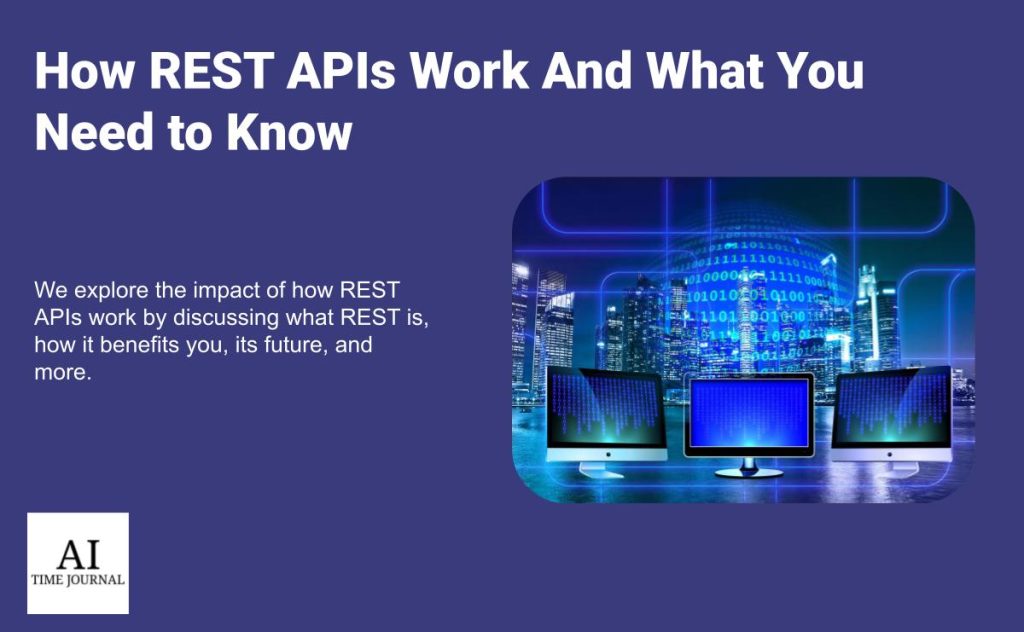
A computer scientist named Roy Fielding was the one who came up with the concept of REST, which stands for representational state transfer. A REST API, also known as a RESTful API, is a pair of computer systems that exchange data safely over the internet.
The Application Programming Interface (API) acts as the intermediary or the messenger between the servers. In this instance, it is also a method for an organization to exchange resources and data while preserving security, control, and authentication.
In this article, we’ll answer your many questions by demonstrating several ways that REST APIs are used, and we will also define how. As many things evolve in the future, so does REST API; we’ll be touching base on how it will influence us in the future as these things unfold over time.
The following articles provide further reading on the topic of data security: The Door to Tomorrow Predictive and Prescriptive Data Security Governance and The Latest Trends in Data Infrastructure.
Popularity of REST
In recent years, REST API’s popularity has skyrocketed due to its effectiveness as a flexible, adaptable framework for developing web-based applications.
REST APIs are based on the principles of REST architecture, which is an architectural style for distributed hypermedia systems. This architecture has been widely adopted by web developers, allowing them to quickly create and deploy web services.
Some of the many benefits of REST API are the following :
- This API provides a simple, efficient way to access and manipulate data over the web.
- They are language and platform-independent, making them easy to integrate with existing systems.
- REST APIs are also much easier to use than other web service protocols such as SOAP, which can be complex and difficult to understand.
- They are well-documented and require little coding or configuration, making them perfect for new web services developers.
Most of the time, this API uses the lightweight and easy-to-read JSON format. This makes it easier for developers to interact with the API because they don’t have to write complicated code to interpret and understand the data.
REST APIs can also be used to create applications that are more responsive and dynamic, as they allow for real-time data manipulation. This can be beneficial for businesses that need to update their applications regularly.
Master courses about data visualization through interaction and comprehension, check out: Best Data Visualization Courses.
Overall of the Architecture
REST APIs are based on an architectural style for distributed hypermedia systems such as the World Wide Web. It works by allowing clients to access a set of resources that are represented through a uniform interface:
- The client will send a request to the server using the HTTP protocol, and the server will respond with a status code, headers, and an optional body.
- The server will respond to the request according to the parameters specified in the request.
- The server will then retrieve the requested resources, format them according to the request, and send them back to the client.
This architecture is designed to be stateless, meaning that the client does not store any state information on the server. This allows for more efficient data transfer and faster response times.
This makes REST APIs highly scalable, as servers do not need to store any state information.
When and How to use REST API
You’ve finally cracked the secret of how to access that file. So, these last few hours have been fascinating, right? Even more interesting is the method through which this occurs.
The REST Application Programming Interface enables two separate software programs to communicate with one another. For instance, if you are programming in JavaScript, you can refer to the file or the File library.
REST APIs use a resource-oriented approach, which means that all resources are accessed through URLs and all requests use the same HTTP methods. They are often used to retrieve and manipulate data from a remote server or database. REST APIs are the most commonly used type of web APIs and are best suited for applications that require a large amount of data processing.
They are also a great option for mobile applications due to their lightweight nature and ability to easily connect to web services.
When determining when and how to use a REST API, it is crucial to take into consideration the sort of application you are developing, the amount of data that is being processed, as well as the level of security and scalability that is required.
The future of REST API
The evaluation of real-time data is undergoing rapid development, which will lead to expansion across various fields, including business. In the future, there will be systems that are more secure and reliable. The capacity to comprehend products through the use of REST API offers technical advancements that help bridge the gap between product management and development, for instance. This is a great example.
In addition to protecting businesses, REST APIs will benefit from continued research and development in the future.
REST APIs are designed to be simple to use and understand. They are also intended to be secure and dependable, and they use authentication and authorization protocols to protect the data.
Overall, REST API is powerful, adaptable, and simple to use. To learn more about security and protection read the following: AI Ethics: The Importance of Data Privacy and Protection and A Novel Approach to Data Privacy: Differential Privacy.
